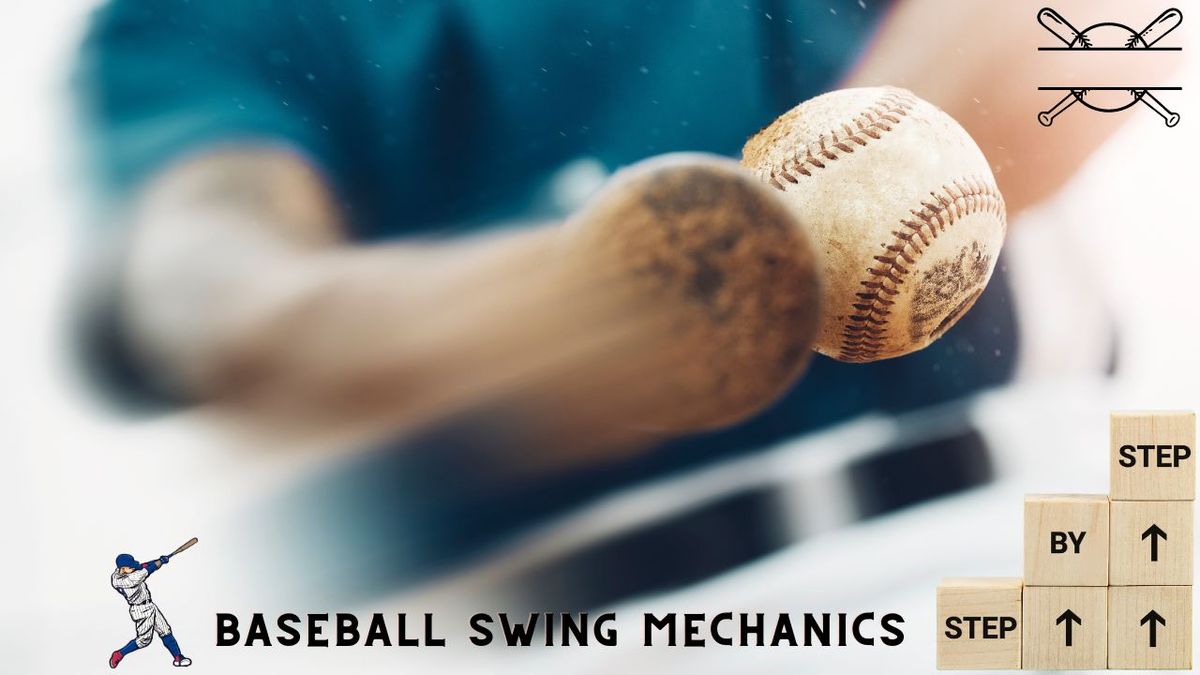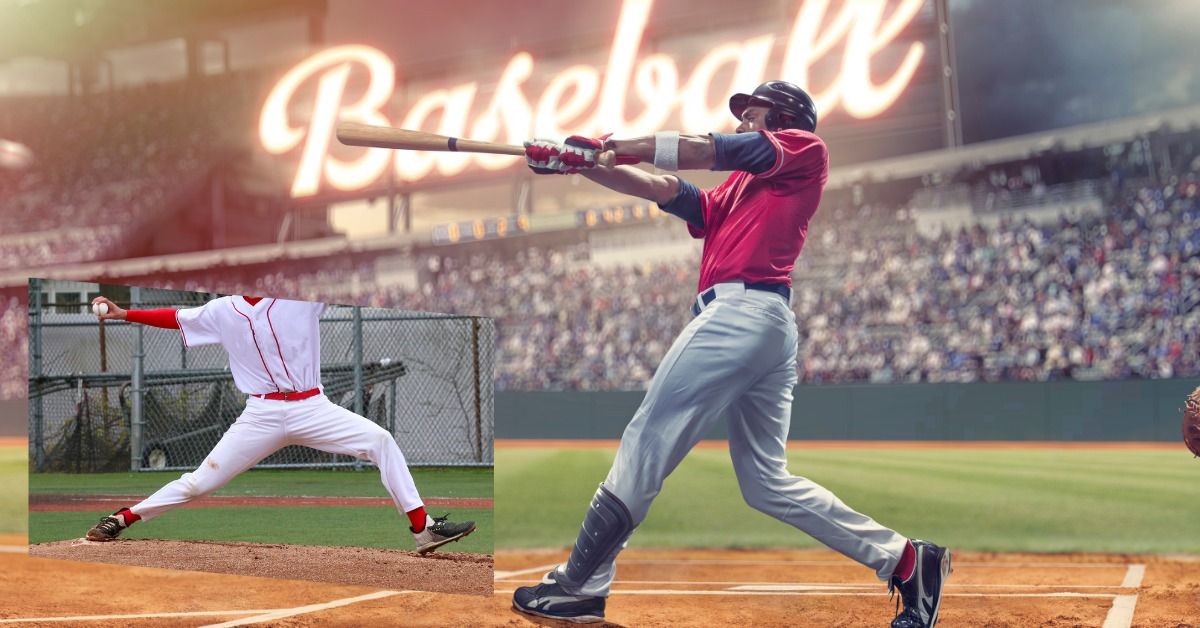Decoding the Secrets of Baseball Swing Mechanics
Unveiling the Poetry of the Swing: Exploring the Intricate Mechanics Behind Baseball's Artful Hitting. Dive into the rhythmic symphony of contact and power swings, where bat meets ball in a dance of precision and potential.

Picture this: a batter steps up to the plate, the crowd holds its breath, and the pitcher sends a blazing fastball hurtling towards home. What follows next is a dance of physics, precision, and sheer power – the baseball swing. Ever wondered what makes that majestic connection between bat and ball possible?
Welcome to the realm of baseball swing mechanics, where the laws of motion meet the poetry of the game. In this article, we're delving into the secrets behind a hitter's graceful dance with the diamond, uncovering the art and science that elevate a swing into a symphony of success. So, if you're curious about the hip twists, the bat speed, and the sweet spot that shapes a hitter's destiny, you're in for a grand slam of insights.
Get ready to unlock the mystery of the baseball swing, and discover how the mechanics behind it can turn an ordinary player into a home run hero.
Barrel Turn

"Barrel Turn" in baseball refers to a crucial aspect of a batter's swing mechanics, specifically the rotation of the bat's barrel around the hands during the swing. Here's an explanation in bullet points:
- Definition: The Barrel Turn is the rotation of the thick, wider part of the bat (the barrel) around the hitter's hands as they swing.
- Key Movement: It's a pivotal movement that contributes to generating bat speed and making solid contact with the ball.
- Sweet Spot Alignment: The Barrel Turn helps position the bat's sweet spot – the optimal point for hitting the ball – in the correct path to meet the pitch.
- Contact Quality: When executed correctly, the Barrel Turn maximizes the chances of hitting the ball squarely on the bat's sweet spot, leading to powerful and accurate hits.
- Impact on Swing: It's a fundamental component of an effective swing, allowing batters to connect with the ball more effectively and with greater power.
- Skill Development: Batters work on mastering the Barrel Turn through practice, refining their mechanics, timing, and hand-eye coordination.
Stretch and Fire

A fundamental concept in baseball that refers to the mechanics and sequence of a pitcher's delivery. It involves a seamless transition between the initial setup (stretch) and the explosive motion of delivering the pitch (fire). Here's a breakdown in bullet points:
Stretch
- The pitcher begins in a balanced stance with their pivot foot on the rubber and their other foot slightly ahead.
- The pitcher's arms are relaxed, often hanging by their side or holding the ball at their glove's chest level.
- This phase involves a controlled, rhythmic motion as the pitcher assesses the base runners and prepares for the pitch.
- The pitcher's focus is on maintaining balance, controlling their breathing, and reading the signs from the catcher.
Fire
- The "fire" phase is the explosive movement of the pitcher's delivery.
- The pitcher shifts their weight from the stretch position, driving off the rubber with their back leg.
- The hips and upper body rotate in a coordinated motion, generating torque and power.
- The arm comes through in an overhead motion, releasing the ball with speed and accuracy toward the strike zone.
- The firing phase is where the pitcher's energy is fully unleashed, propelling the ball toward the batter.
Match Plane

"Match Plane" in baseball refers to the concept of aligning the bat's swing plane with the trajectory of the pitched ball. This alignment is crucial for making solid contact and achieving successful hits. Here's a breakdown in bullet points:
- Alignment Principle: Match Plane involves ensuring that the path of the bat's swing aligns with the path of the incoming pitch.
- Contact Efficiency: When the bat's swing plane matches the pitch trajectory, it increases the likelihood of making square and well-timed contact with the ball.
- Sweet Spot Utilization: Aligning the Match Plane allows hitters to utilize the bat's sweet spot effectively, optimizing the power and accuracy of the hit.
- Adjustment: Hitters may need to adjust their Match Plane based on pitch location, pitch type, and their own stance and swing mechanics.
- Plate Coverage: Proper Match Plane alignment enhances a batter's ability to cover a wider range of pitches and zones effectively.
- Timing and Consistency: A consistent Match Plane alignment contributes to more consistent and powerful hitting, as it promotes optimal swing mechanics and contact points.
- Training Focus: Hitters work on developing the ability to match the plane of their swing with various pitch trajectories through practice and repetition.
Adjustability
Refers to a batter's ability to adapt and make necessary changes during an at-bat to handle different pitch types, locations, and speeds effectively. It involves the capacity to react to various game situations and pitcher strategies. Here's a breakdown in bullet points:
- Pitch Recognition: Adjustability begins with recognizing the type of pitch early in its trajectory, allowing the batter to adjust their swing accordingly.
- Timing: Batters adjust their timing based on the pitch speed, making sure their swing syncs with the ball's arrival at the strike zone.
- Stance and Setup: Batters may modify their stance and setup based on the pitch type, location, and count, optimizing their chances of making solid contact.
- Plate Coverage: Adjustability enables batters to cover different parts of the strike zone effectively, expanding their chances of hitting pitches in various areas.
- Count Management: Batters adjust their approach depending on the count, being more aggressive with favorable counts and more defensive in challenging counts.
- Pitch Location: Batters adjust their swing to match the pitch's location, aiming to hit the ball where it's pitched and avoid chasing bad pitches.
- Pitch Sequencing: Adjustability involves recognizing patterns in a pitcher's sequencing and adjusting one's approach accordingly.
- Mental Agility: It's a combination of physical adjustments and mental flexibility, allowing batters to think on their feet and react to changing circumstances.
Be Athletic
"Be Athletic" is a concept in baseball that emphasizes the importance of athleticism and versatility in a player's performance on the field. It encompasses various skills and attributes that contribute to a player's overall effectiveness and impact. Here's a breakdown in bullet points:
- Versatility: Being athletic means having the ability to excel in multiple aspects of the game, such as hitting, fielding, running, and throwing.
- Agility: Athletic players exhibit quickness and agility, allowing them to move fluidly on the field, change directions, and react swiftly to plays.
- Speed: Athleticism often involves possessing above-average speed, enabling players to cover more ground in the field and advance on the bases.
- Coordination: Athletic players have good hand-eye coordination, aiding them in making solid contact with the ball and executing precise throws.
- Reaction Time: Quick reflexes and reaction times are crucial for athletic players to respond to fast-paced plays and make split-second decisions.
- Balance and Control: Being athletic involves maintaining balance and control while executing various movements, whether batting, fielding, or throwing.
- Explosiveness: Athletic players can generate explosive bursts of speed and power, benefiting them in running, hitting, and fielding situations.
- Adaptability: Being athletic allows players to adapt to different positions, roles, and game situations, contributing to team versatility.
- Fitness: Athleticism goes hand in hand with physical fitness, ensuring players are in optimal shape to perform at their best throughout the game.
Baseball Swing Mechanics
FAQs
Q: What are the 3 phases of a swing in baseball?
Q: What is the proper baseball swing?
Q: How do you teach baseball swing mechanics?
Q: What are the two types of swing?
Answer: In baseball, the two main types of swings are the "contact" swing and the "power" swing. These swings serve different purposes and are used based on the game situation and the desired outcome at the plate. Here's an overview of each type:
1. Contact Swing:
- Purpose: The contact swing is primarily aimed at making solid contact with the ball and putting it in play. It's used when the batter's main objective is to get on base or advance runners.
- Mechanics: In a contact swing, the batter focuses on making a shorter and more controlled swing. The emphasis is on making contact with the ball and using the entire field for placement.
- Use Cases: Batters may opt for a contact swing with two strikes to protect the plate and avoid striking out. It's also commonly used in hit-and-run situations or when a runner is on base and the priority is advancing them.
2. Power Swing:
- Purpose: The power swing is employed when a batter is aiming to drive the ball deep into the outfield or over the fence for extra bases or a home run.
- Mechanics: The power swing involves a more aggressive and forceful swing, often with a longer follow-through. The batter generates greater bat speed and focuses on maximizing the ball's exit velocity.
- Use Cases: Batters may use a power swing in situations where they want to capitalize on a favorable pitch count or take advantage of a pitcher's mistake. It's also common when there are runners in scoring position and the goal is to drive them home with a big hit.
Both types of swings have their merits and are essential tools in a batter's repertoire. The choice between a contact swing and a power swing depends on factors such as the game situation, the pitcher's approach, the count, and the overall strategy of the at-bat. Successful hitters know how to adapt their swing based on these factors to achieve the desired outcome.
Q: What are the 3 core fundamentals of baseball?
Answer: The three core fundamentals of baseball are often referred to as the "Three T's":
- Throwing: Developing proper throwing mechanics and accuracy is essential for all positions on the field. A strong and accurate throw can prevent baserunners from advancing and secure outs.
- Hitting: The ability to make consistent and impactful contact with the ball is crucial for offensive success. Hitters work on their swing mechanics, timing, and pitch recognition to generate hits and contribute to scoring runs.
- Fielding: Fielding encompasses various defensive skills, including catching, fielding ground balls, making accurate throws, and positioning oneself to make plays. A strong fielder can turn potential hits into outs and contribute to a team's defensive success.
Key Takeaways!
In the realm of baseball, the swing mechanics serve as the heartbeat of the game. A fusion of technique, timing, and finesse, a batter's swing is a testament to the artistry of the sport. From the controlled elegance of the contact swing to the explosive force of the power swing, mastering these mechanics is the key to unlocking the potential for game-changing moments. As players step into the batter's box, they carry with them the culmination of practice, precision, and passion – a swing that encapsulates the essence of baseball itself.
Must-Read Articles for Baseball Enthusiasts
- Baseball Training Apparel That Elevates Your Game to the Next Level!
- Stylish Baseball Bag That Will Make You Feel Like a Pro!
- Mind-Blowing Facts You Didn't Know About Baseball - Thanks to Baseball Reference!
- 4 Baseball Cleats That Will Have You Stealing Bases Like a Pro!
Sponsored By

